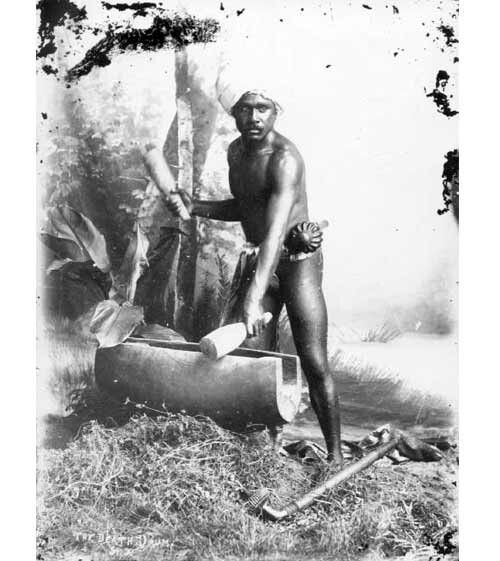The Unique Fijian Wooden Bells:
The lali ni kabakoro was beaten when besieging a village while in very formal warfare (ivalu votu) a big wooden lali was beaten to warn the defenders when they were likely to be attacked.
The number of beats at the end showed the number of days left before the planned attack.
During a siege, the lali was beaten non-stop when signalling for help from “friends” and allies.
During a siege, the lali was beaten non-stop when signalling for help from “friends” and allies.

The lali ni bokola was beaten from behind the ramparts of a fortified village, within the field or on board a canoe.
“It was beaten to proclaim the capture of enemy bodies and the start of the victory dance over them prior to their sacrifice and cooking,” Ewins said.
“It was beaten to proclaim the capture of enemy bodies and the start of the victory dance over them prior to their sacrifice and cooking,” Ewins said.
The victory dances were, the cibi for men and the dele or wate for women, the latter performed with a sexual theme and stimulating vigour which Ewins said were an “extraordinarily lascivious affair”.
Due to the fact that the lali had a significant communications role to play during battle or surprise attacks, it was a prized “spoil of war”.
The Hill Tribes of Fiji:
In the book The Hill Tribes of Fiji, colonial administrator Adolph Brewster wrote that during one of Ratu Seru Cakobau’s victories in the 1870s, the Bauan chief’s spoils of war included “the great big wooden lali or war drums”.
The sacred lali ni burekalou was beaten at the village temple site, lali ni sautu was sounded to signify a truce reached in battle and lali ni vutu was beaten at the birth of a chief.

The lali ni meke or dance drums were the most popular wood crafts for pastime in Fiji and signified peace times and celebrations.
It provided music for the chant that were sung and was accompanied by the sticks and derua.
The Resonance of Lali ni Meke: Small Drums with a Big Presence in Fijian Entertainment and Celebrations:
Lali ni meke are similar in shape to the large drums, only they are typically smaller (30 to 60 centimetres long).
They are used during entertainment segments or adored during special celebratory events and traditional gatherings.
“The sound they emit when struck with their little beaters is sharp and piercing but not resonant,”Ewins noted.
Today, the huge war drums are no more, its prominence usurped by the slightly smaller ones beaten in villages to summon people to church or for telling the time in rural schools where there are no bells or sirens.

Some experts say the lali is neither a drum (because it has an open hollow), nor a gong because it is does not have fl at plates. Ewins said it could even be a type of wooden bell.
Whatever it is technically, the lali showcases the superb craftsmanship of old traditional woodsmen, who created The Unique Fijian Wooden Bells wood artifacts that survived the ages and are still capable of “making noises” in 21st century Fiji.
(This article was compiled using information from the article Drums of Fiji by Rod Ewins published in the Fiji Museum quarterly magazine, Domodomo Volume 4, 1986)
Source: The Fiji Times


















